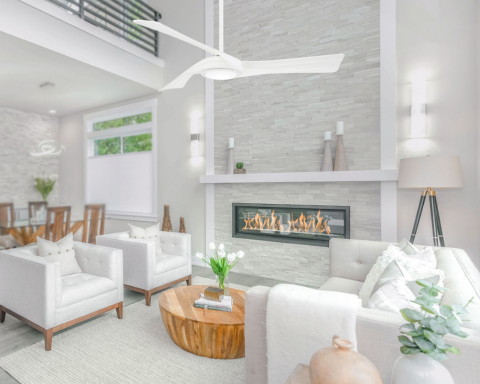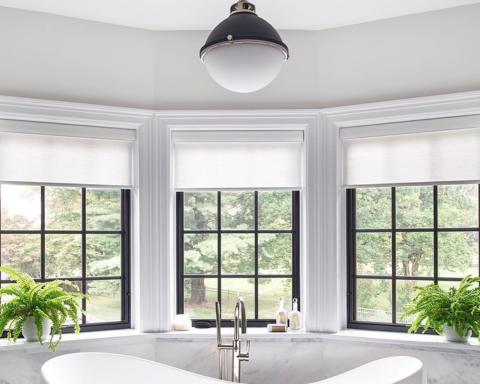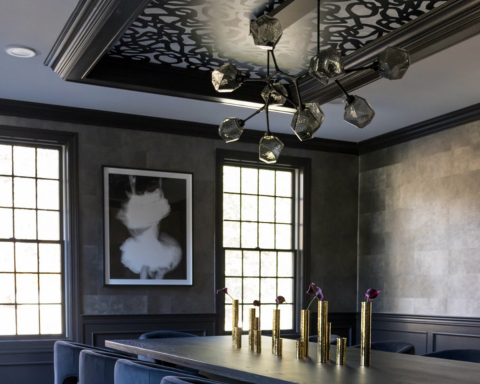Free Ground Shipping on Orders Over $49 Details & Exclusions Excludes Curb Side Delivery (LTL). Lower 48 United States Only.
Nov 19, 2019
Spotlighting the Different Types of Pendant Lights
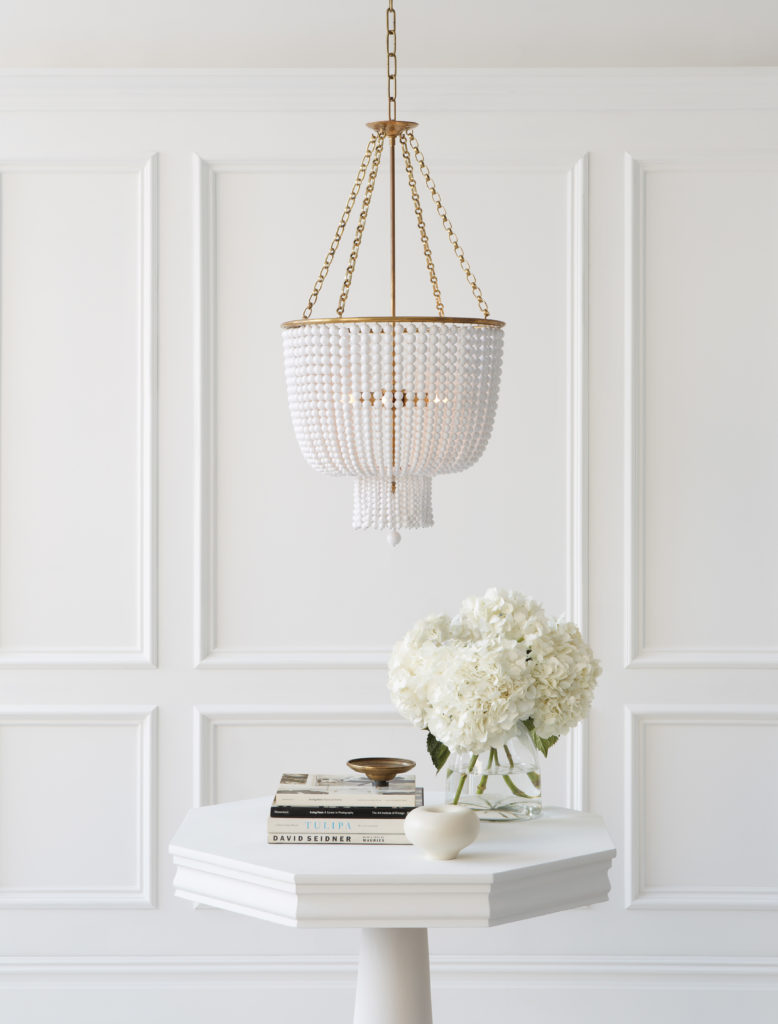
Do you like having options? Then you’ll thoroughly enjoy shopping for pendant lights. Though derived from a rather simple concept (essentially, a bulb on a string), these fixtures have evolved into complex and amazing creations. Some are abstract and boisterous, while others are straight-edged and subdued. With so many different types of pendant lights to choose from, you can design a home lighting plan that fits your needs and fulfills your dreams.
Let us show you the great potential of pendant lighting in this comprehensive guide.
The 4 Advantages of Pendant Lighting
- Visually versatile – What’s most unique about pendant lights is that they can take on any style, size, shape or feature. You can even use multiple pendants to create a series or to spread light across a larger area. These elements make them supremely versatile in interior design.
- Space-saving – Like all ceiling lighting, pendants free up precious table and floor space. They don’t require any additional square footage other than the air above your head, which you’re not using anyway. This is especially helpful in keeping your home visually clean and decluttered. (Unfortunately, this doesn’t get you out of actually cleaning your light fixtures, baseboards, and all those other inconvenient chores– we wish!)
- Decorative – No matter what type of mood or design function you’re trying to accomplish, there’s a pendant light that will achieve it. They can add personality, a pop of color or just a touch of shimmer and sparkle. It all depends on the types of pendant lights you choose and the materials they’re made with.
- Multi-functional – Pendants provide a few different lighting effects, depending on their size, the direction of light and their placement within a space. An exposed bulb pendant, for instance, is great task lighting in a reading nook.
Discover the Different Types of Pendant Lights
It’s easy to understand why pendant lights are a brilliant design choice when lighting your home – they have so much to offer. It does, however, require some thoughtful consideration to decide what type of pendant lights you want to incorporate. You have nearly a dozen different options. Get to know them all before you shop, so you can mull it over and make the right decision.
Hint: You’re allowed to love more than one type of pendant.
Abstract Pendants
What are abstract pendants?
Most pendants are categorized by their shape or size, which you’ll see below. The ones that don’t have a definitive shape are considered abstract pendants. Often made with rare materials or in fanciful forms, abstract pendants make for eye-catching statement pieces in your home.
How do you use them?
Take the “less is more” approach with abstract pendants. Not every room in your house needs – or even benefits from – a bold light fixture. Wield their power where it has the most impact on your design.
Where do they work best?
- Setting the tone in your foyer
- Creating a focal point in your living room
- Starting conversations at the dinner table
- Lending ambiance to your master suite

The Aerin Jacqueline by Visual Comfort and Co. is a refined abstract pendant, made with acrylic white beading and a soft brass finish. It doesn’t scream for attention. Instead, it politely asks you to hit pause. Whether it’s hanging above your breakfast table or dangling in your master dressing room, this pendant will usher you to take a seat and relax.
Bell Pendants
What are bell pendants?
Bell pendants are named for their bell-shaped curvature. Think of the Liberty Bell, which has a deep bowl that curves out and is open at the bottom. Now, imagine a light bulb inside the bowl and you have the classic bell pendant, sending light directly below the fixture.
Lighting designers have, of course, re-interpreted the shape in a number of ways. Some bells are turned on their head, so that the light shoots straight up. Others have additional curves and grooves that speak to farmhouse lighting decor. Though most often made of glass and metal, you can find bell pendants in a variety of textures – from wicker to wood.
How do you use them?
Bell-shaped pendants are usually directing light down, which is why they make such great task lighting – especially in your kitchen. The size of the work space you’re illuminating will dictate how many bell pendants are suitable. A kitchen island, for instance, would need multiple bell pendant lights. Meanwhile, your kitchen sink would be sufficiently lit with just one.
Where do they work best?
- Spotlighting your kitchen sink or counter
- Adding ambient lighting in your living room
- Hanging above your workspace or reading chair
- Creating a personal spa experience over your stand-alone soaker tub
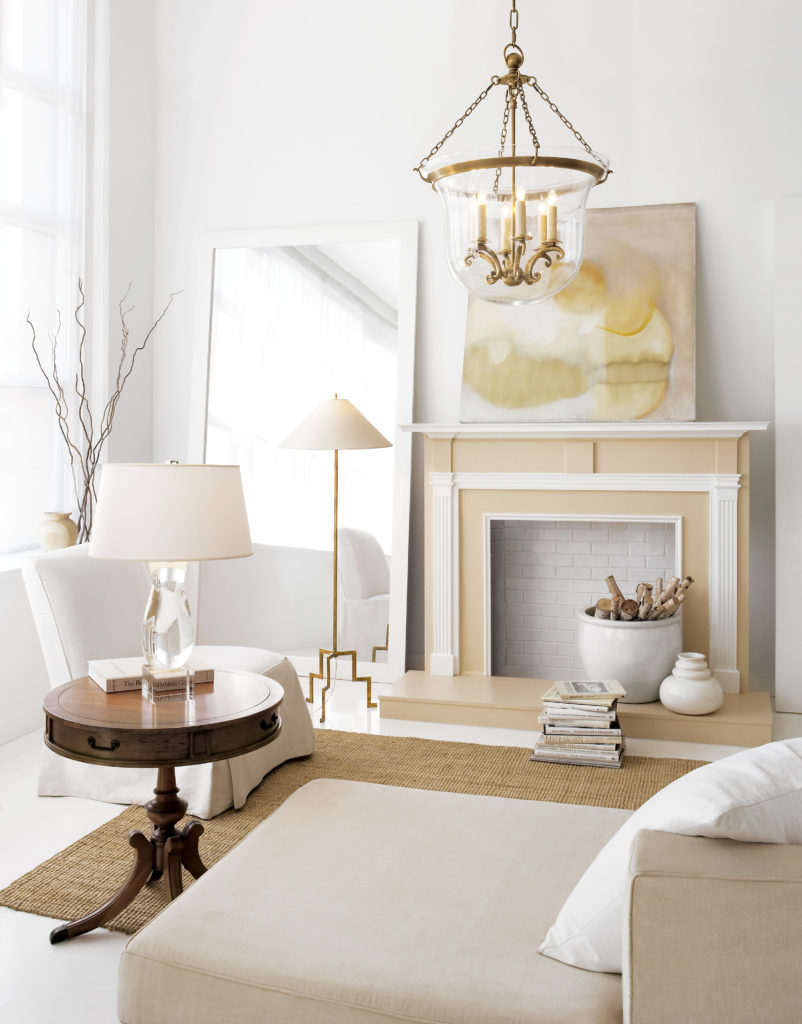
The E.F. Chapman Country Bell is a unique type of bell pendant, because it supplies general lighting. Not only is the bottom of the bell open to the ceiling, but the elegant candelabra core sends the light up and out into your room. It’s the kind of piece that makes you feel like there’s a warm fireplace burning in the background.
Bowl (Dome) Pendants
What are bowl pendants?
While bell-shaped pendants have a bowl, true bowl pendants take on more of a dome design. They tend to be wider and more open at the mouth. Most bowl pendants have room to hold only one light bulb. The bowl itself can face up or down, which determines the direction of the light – and the main function of the pendant.
Plain and painted metal is the primary material for bowl pendants. But, like the bell, their curvature is simply stunning as well in clear or frosted glass. The pure roundness of bowl pendants is a feature that blends well with traditional-style homes, modern farmhouse décor and transitional designs.
How do you use them?
Inverted bowl pendants – those that face up – are best suited for ambient lighting. Otherwise, you would use a traditional bowl pendant for task lighting in your kitchen, home office or even laundry room.
Where do they work best?
- Decorating your foyer
- Hanging in threes above your kitchen island
- Directing light down over your desk
- Adding ambiance to your formal living room
Cage Pendants
What are cage pendants?
A pendant with any kind of frame around it is considered a cage pendant. The cage can be rectangular like a lantern, perfectly square, robustly round, diamond-shaped or abstract. As you can imagine, metal and wood are the most common materials for cage pendants. Some of these fixtures have glass panes between their frames, while others are left completely open.
When it comes to their light source, cage pendants may have a single exposed bulb or a multi-light candelabra hanging from the center. A lantern-style candelabra is popular in modern traditional styles, while an exposed bulb with a wire frame is industrial.
How do you use them?
The type of light source the cage pendant features will dictate its primary function in your home. A single exposed bulb, for instance, provides task lighting in an area where you cook, read, sew or do homework. Multi-light candelabras, on the other hand, are better for your general lighting needs.
Where do they work best?
- Spreading light in a living room
- Focusing on a single spot in a reading nook
- Warming your entryway
- Spotlighting your kitchen counters
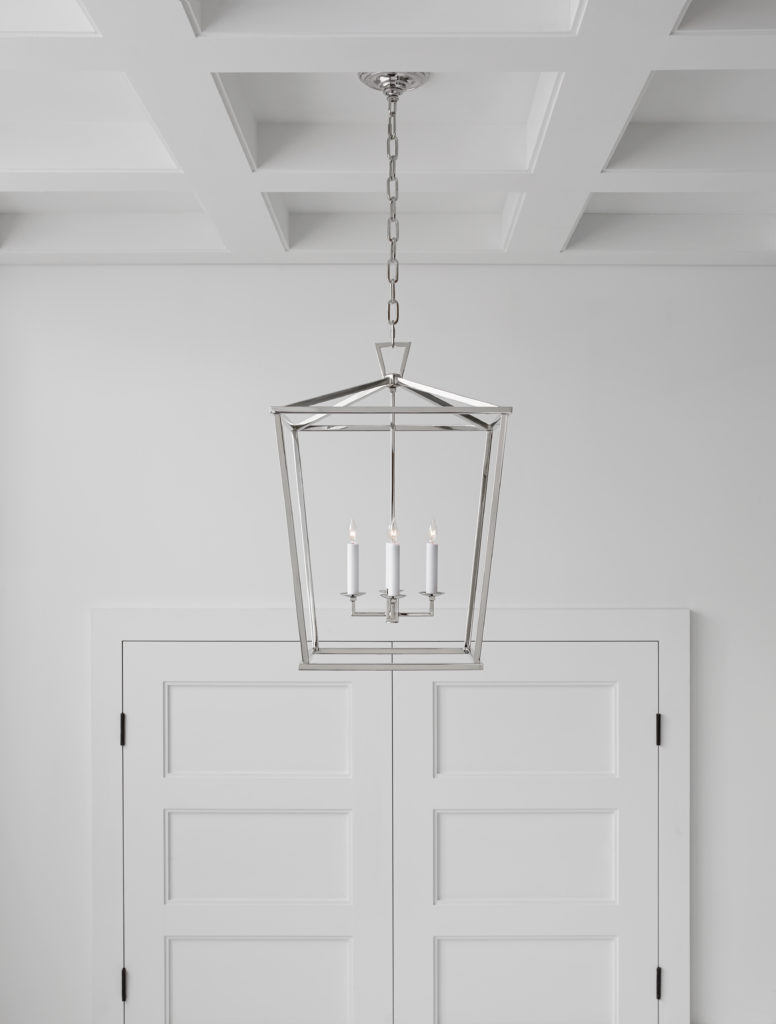
Create continuity within your space by pairing the lantern-style E.F. Chapman Darlana with an equally square coffered ceiling. Even if your home lacks architectural flair, this sleek profile will amplify the straight lines of a mid-century modern table or will balance the weight of patterned wallpaper.
Cone Pendants
What are cone pendants?
These are very similar to bowl pendants, except the shape of their light shade has a distinctive cone shape. Instead of a full-body roundness, cone pendants become tapered at the end closest to the cord and have a streamlined edge that looks clean in a modern home.
Cone pendants also only hold one light bulb inside their shade. The shade may be made of linen, glass or metal. Metal cone pendants come in an array of colors and textures – from matte black to distressed stainless steel. In fact, mixing two materials is common with cone pendants and only makes them that much more aligned with mid-century modern design ideals.
How do you use them?
Because of its megaphone construction, the cone pendant can only direct light downward. So, naturally, cone pendants are a popular choice for task lighting. That said, if you go with a smaller cone and shorter cord, you can use these types of pendant lights to highlight a piece of art on the wall or sculpture in the corner.
Where do they work best?
- Suspended over your kitchen island or peninsula
- Sitting close to the wall, just above an oversized piece of art
Drum Pendants
What are drum pendants?
Like a drum you beat to play music, drum pendants have a wide circular form. The classic version has a plain white linen shade without any frills. But you can also find plenty of drum pendants with metal overlays that add texture and pattern to the piece. Some drums are entirely made of metal, wood, or another non-traditional material. No matter what material you choose, though, a drum pendant signifies simple elegance in your home.
How do you use them?
The drum shade diffuses light, which creates a soft, ambient glow all around. In main living spaces, where you need the most amount of light, use a large drum pendant to illuminate the whole area. Drum pendants can also be quite decorative. Pick a more detailed design if your space needs another layer of texture.
Where do they work best?
- Coordinating with a coffee table in your main living space
- Hanging over a round dining room table
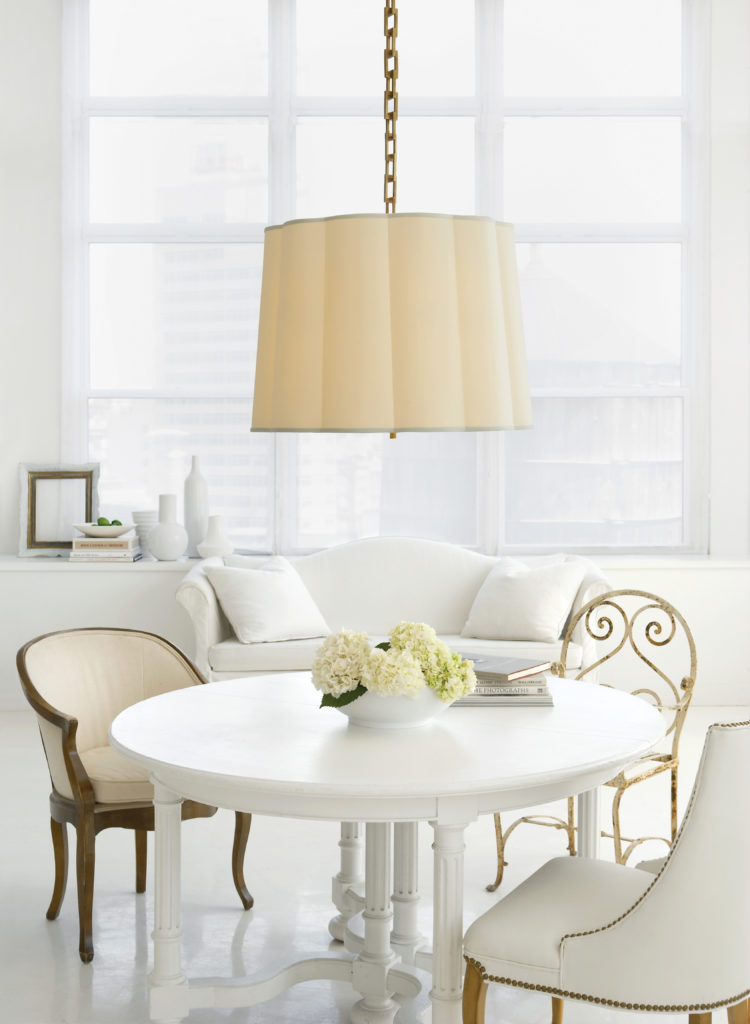
This beautiful drum-style pendant adds just a touch of texture with its scalloped edges. When you’re trying to create an intimate dining area, the off-white silk shade will soften the light and set the mood. For an even warmer, more inviting vibe, choose the Barbara Barry Simple Scallop Pendant in a soft brass finish. It pairs well with dark wood and a neutral shag rug.
Exposed Bulb Pendants
What are exposed bulb pendants?
The exposed Edison light bulb fixture is the ancestor of all pendants. It’s a bulb that hangs from an electrical cable, rope cord or metal-encased wire. While it seems as if there’s little room for variation in an exposed pendant, the type of bulb and the fixture’s finish can drastically change the overall style.
It’s true, almost all exposed pendants feature a filament bulb, as these Edison-inspired designs create the most character. That said, there are dozens of different shapes from which to choose. A clear globe bulb with a grainy wood casing says mid-century modern, while a tubular filament surrounded by all black would shine in an industrial loft.
How do you use them?
Exposed bulb pendants offer the best task lighting. Their light has nowhere to hide, which means you may be able to get away with a single pendant.
That said, their structure is so simple that you can afford to group several together if you need it. Multiple exposed bulb pendants can be clustered at varying heights, lined up in an even row or staggered to create visual interest.
Where do they work best?
- Lining your kitchen island from one end to the other
- Huddling together in a tight entryway
- Shining solo over a wing-backed chair
Globe Pendants
What are globe pendants?
When a bowl pendant meets its other half, it’s called a globe pendant. It can also be called a sphere or orb, because it’s a full, three-dimensional circle. This type of soft geometric lighting hit its heyday in the 1950s, which is why it works like a smooth operator in mid-century modern interiors.
Globe pendants fit in with modern décor not just for their shape, but for the effect they have on a space. Often made of clear or seeded glass, globe pendants never clutter the design. Even globes made of opaque white glass or a brassy metal still look like bubbles floating in the air.
How do you use them?
As you might guess, clear glass globes give off the most direct light, which can be very focused if the bulb is powerful enough. For the most part, though, globe pendants are for ambiance and decoration.
Their full-circle shades diffuse light throughout a certain radius but needs accent lighting to pick up the slack. So make sure you pair your globe pendants either with multiple globes or other types of lighting.
Where do they work best?
- Elevating your master bedroom décor
- Doubling up over a dining table or kitchen island
- Sprinkling light along a long hallway
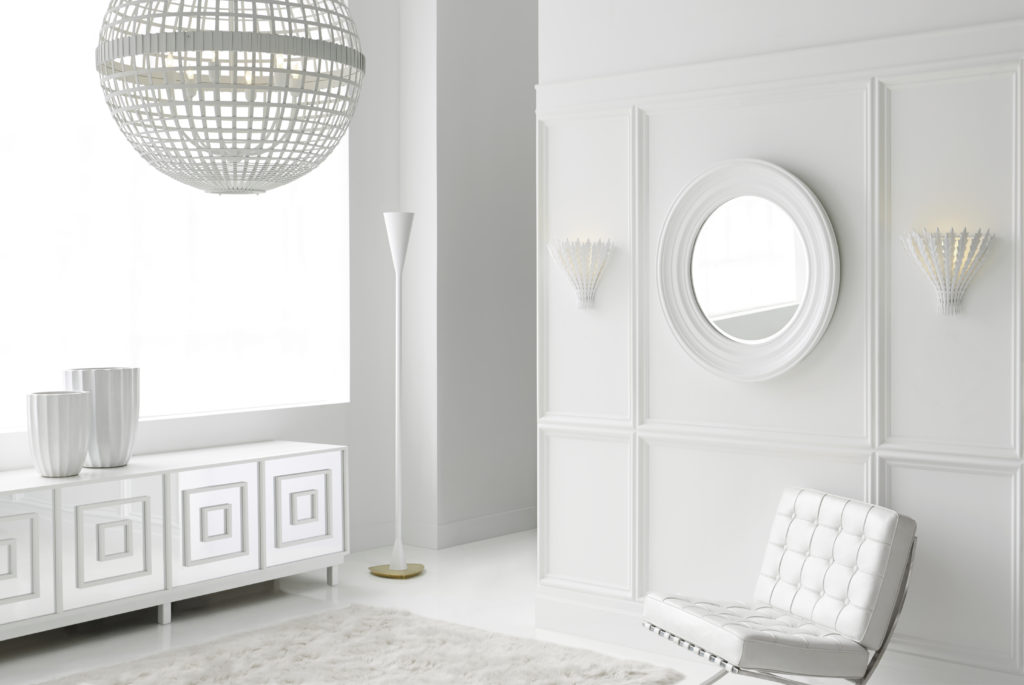
In a space that’s totally practical – like a master bathroom – the Aerin Mill Pendant serves as a punch of personality. Its candelabra lighting peeks through the cross-sectional cage, keeping the glow slightly muted and the Earthly design utterly bold. Even in plaster white, this globe grabs attention.
Linear Pendants
What are linear pendants?
A linear pendant is a multi-light fixture that uses one elongated base to support several light sources all in one row. Linear pendants feature at least two bulbs, unless it’s made for LED lights, in which case a strip of LED lighting may illuminate the fixture.
Because they house multiple lights, linear pendants are rarely small. In fact, these fixtures will consume your line of vision. No matter what style you choose, expect your linear pendant to be an influential design accessory.
How do you use them?
As their name implies, linear pendants give you one long line of lighting. In some cases, the bulbs are pointed up or covered by lamp shades. But even those designs supply sufficient task lighting, because of their substantial size and weight.
It goes without saying that you need to have enough headspace to accommodate a linear pendant. More importantly, assess where you have a visual hole and use a linear pendant to fill in the gap. One of these long structures can both illuminate your space and bring your design to life.
Where do they work best?
- Lighting a long dining room table
- Illuminating across your kitchen island
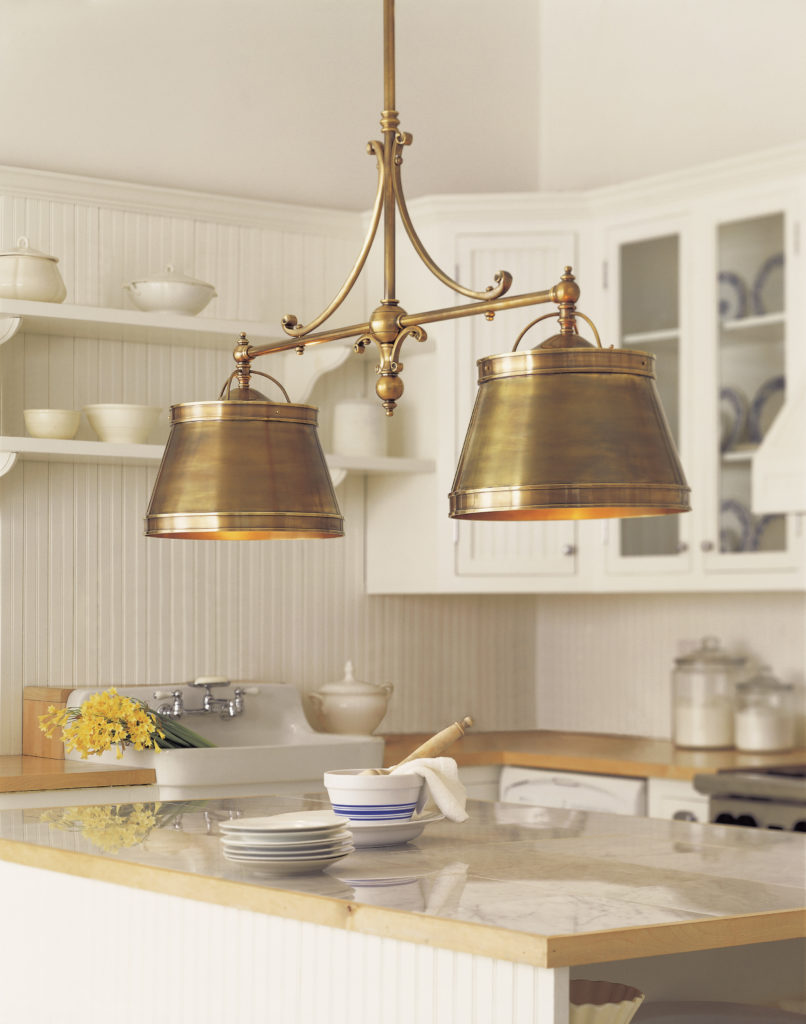
The E.F. Chapman Sloane Street Shop Linear Pendant has just enough finials and curly-cues to define classic design without over-dressing the fixture. Like the two cone-shaped shades themselves, this pendant never tips the scales of justice. It is perfectly balanced and suitable for any traditional-style home. Let it elevate a rustic kitchen or complement a dining room with heavy wood furniture.
Mini Pendants
What are mini-pendants?
Mini-pendant lights are by definition small–in terms of the amount of light they project, the drop length of their cord, the size of the shade or bulb, or a combination of any of these elements. Typically speaking, mini-pendants measure about 12 inches wide or less. They don’t provide an abundance of light, which is why you will often see them clustered together.
Where do they work best?
- Adding task lighting in your kitchen
- Welcoming guests at your front door (inside or outside)
- Spreading light across a long dining room table
- Lighting a dark corner or reading nook
How do you use them?
These petite pieces can stand alone if the space you’re lighting is tight and doesn’t require much illumination. However, mini-pendants are most often hung in groups. When it comes to adding multiples – of anything, really – designers will use the Rule of Three, which states that objects in groups of three are more visually appealing. Odd numbers, in general, tend to please the eye. So you could hang five, seven or even nine mini-pendants in one area if it suits your design goals.
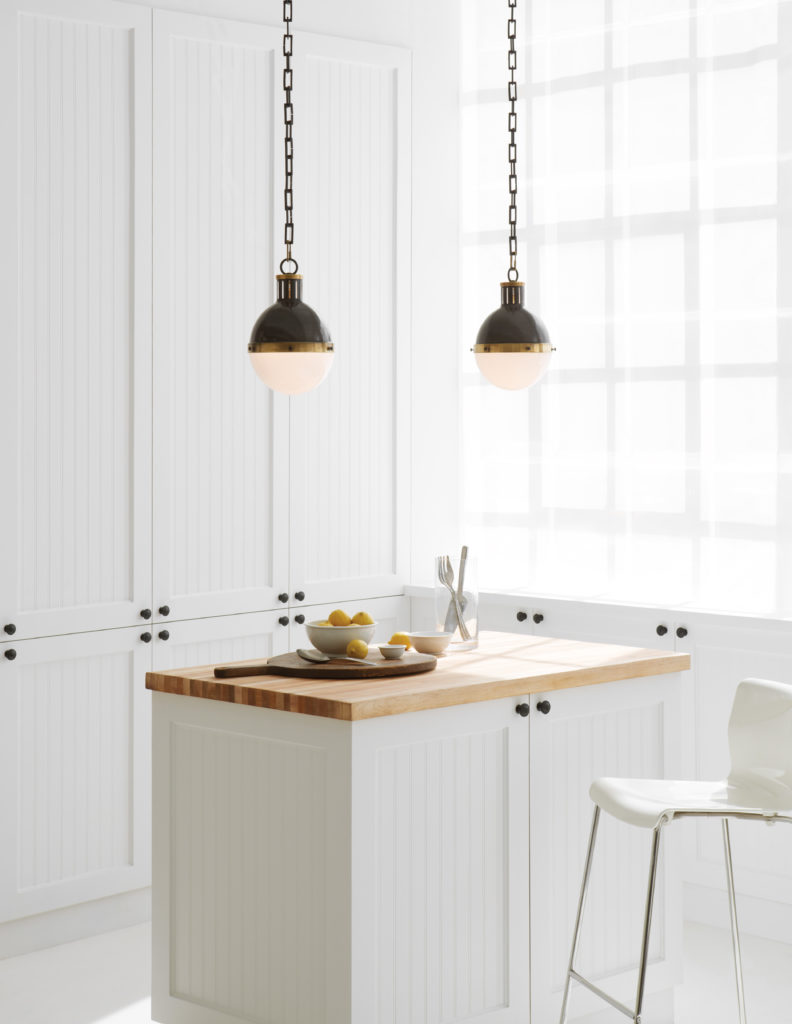
Do you need balance in your home? You’ll find the perfect yin and yang in the Thomas O’Brien Hicks Mini Pendant. It fuses together the purity of white glass with the old-world charm of distressed metal. The bronze finish offers an exceptionally striking contrast that performs, whether you hang one in a corner or two over your kitchen counter.
Multi-Light Pendants
What are multi-light pendants?
Multi-light pendants can be several individual pendants that are configured together, or this can mean there are multiple lights hanging from one fixed base. Technically, multi-light pendants can adopt any shape, size or form. In other words, you could have multi-light globe pendants that are balled up like an active molecule.
How do you use them?
When you want your lighting to be a little artistic, make a unique arrangement using a handful of different pendants. You can choose the same design in different finishes, or mix up the group with various shapes, sizes, and materials.
For multi-light pendants that come in a pre-made package, all you have to do is find the right placement. This type of pendant lighting is a natural showstopper, so make sure you use it in a high-trafficked area – or wherever you need a striking focal point and ample task lighting.
Where do they work best?
- Wowing houseguests in your vaulted foyer
- Creating a focal point in your lightly furnished dining room
Explore More
Decisions, decisions. From rustic chandeliers to modern floor lamps, you have a lot of lighting options. Each one offers something special, which is why it’s impossible to pick a favorite. What you can do, though, is explore the possibilities. These different types of pendant lights are a great place to start. Pendants can be positioned in any part of your house and offer endless design opportunities. This guide walked you through most of them, but don’t let your imagination stop here. Lighting has no limits!

